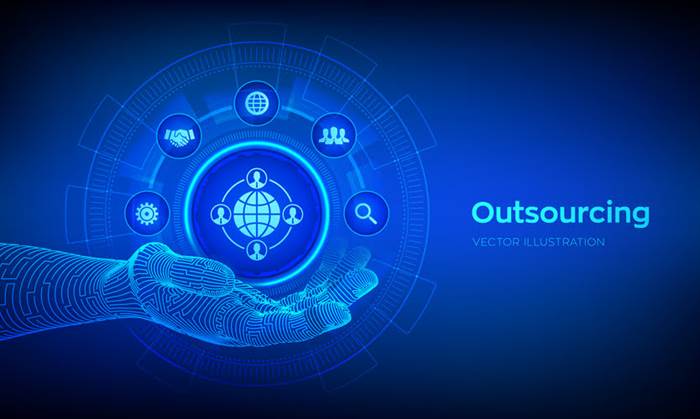Data science is a slippery term that encompasses everything from handling data – traditional or big – to explaining patterns and predicting behavior. Data science is done through traditional methods like regression and cluster analysis or through unorthodox machine learning techniques. With machine learning, specifically supervised learning, banks can take past data, label the transactions as legitimate, or fraudulent, and train models to detect fraudulent activity. When these models detect even the slightest probability of theft, they flag the transactions, and prevent the fraud in real time. Predictive analytics in data science rest on the shoulders of explanatory data analysis, which is precisely what we were discussing up to this point. Once the BI reports and dashboards have been prepared and insights – extracted from them – this information becomes the basis for predicting future values.
They are not just suitable for mathematical and statistical computations; they are adaptable. Unsupervised learning is extremely effective for discovering patterns in data, especially things that humans using traditional analysis techniques would miss. Data science, and business intelligence, are invaluable for handling over and undersupply.
These skills are required in almost all industries, causing skilled data scientists to be increasingly valuable to companies. When they’re hosted in the cloud, teams don’t need to install, configure, maintain, or update them locally. Several cloud providers, including IBM Cloud®, also offer prepackaged tool kits that enable data scientists to build models without coding, further democratizing access to technology innovations and data insights.
The list of vendors includes Alteryx, AWS, Databricks, Dataiku, DataRobot, Domino Data Lab, Google, H2O.ai, IBM, Knime, MathWorks, Microsoft, RapidMiner, SAS Institute, Tibco Software and others. The typical data analyst works with software tools like Tableau and Microsoft Power BI. Unlike data scientists, data analysts are not commonly expected to use advanced statistical modeling techniques, write algorithms or make predictions. Data science is considered a discipline, while data scientists are the practitioners within that field. Data scientists are not necessarily directly responsible for all the processes involved in the data science lifecycle. For example, data pipelines are typically handled by data engineers—but the data scientist may make recommendations about what sort of data is useful or required.
Where is business intelligence used?
Businesses use data scientists to source, manage, and analyze large amounts of unstructured data. Results are then synthesized and communicated to key stakeholders to drive strategic decision-making in the organization. The accelerating volume of data sources, and subsequently data, has made data science is one of the fastest growing field across every industry. As a result, it is no surprise that the role of the data scientist was dubbed the “sexiest job of the 21st century” by Harvard Business Review (link resides outside of IBM). Organizations are increasingly reliant on them to interpret data and provide actionable recommendations to improve business outcomes.
In addition, data scientists frequently work with pools of big data that may contain a variety of structured, unstructured and semistructured data, further complicating the analytics process. The specific business benefits of data science vary depending on the company and industry. In customer-facing organizations, for example, data science helps identify and refine target audiences. Marketing and sales departments can mine customer data to improve conversion rates and create personalized marketing campaigns and promotional offers that produce higher sales. From an operational standpoint, data science initiatives can optimize management of supply chains, product inventories, distribution networks and customer service.
AutoAI, a powerful new automated development capability in IBM Watson® Studio, speeds the data preparation, model development, and feature engineering stages of the data science lifecycle. This allows data scientists to be more efficient and helps them make better-informed decisions about which models will perform best for real-world use cases. These insights can be used to guide decision making and strategic planning. Your organization’s financial team can utilize data science to create reports, generate forecasts, and analyze financial trends. Data on a company’s cash flows, assets, and debts are constantly gathered, which financial analysts can use to manually or algorithmically detect trends in financial growth or decline.
What Skills do Data Scientists Need?
Data science platforms are built for collaboration by a range of users

including expert data scientists,
Data Scientists
citizen data scientists,
data engineers, and machine learning engineers or specialists. For example, a data
science platform might allow data scientists to deploy models as APIs,
making it easy to integrate them into different applications. Data
scientists can access tools, data, and infrastructure without having to

wait for IT. Machine learning and data science have saved the financial industry millions of dollars, and unquantifiable amounts of time. For example, JP Morgan’s contract intelligence platform uses natural language processing to process and extract vital data from thousands of commercial credit agreements a year. Thanks to data science, what would take around hundreds of thousands manual labor hours to complete is now finished in a few hours.
According to the US Bureau of Labor Statistics, employment of data scientists is expected to rise 15 percent by 2029—far faster than the four percent average for all occupations. Yet, to harness the power of big data, it isn’t necessary to be a data scientist. When the data is too big, or the data scientist is under too much pressure What is data science for resources to label the data, or they do not know what the labels are at all, data science resorts to using unsupervised learning. This consists of giving the machine unlabeled data and asking it to extract insights from it. This often results in the data being divided in a certain way according to its properties.
- Next up in the data science and its applications list comes route planning.
- Data science is being used in numerous fields, but it’s not all about deep learning or the search for artificial general intelligence.
- Both fields play vital roles in leveraging the power of data to understand patterns, make informed decisions, and solve complex problems across various domains.
- The term “data science” has been in use since the early 1960s, when it was used synonymously with “computer science”.
- The domains are intended to broadly encompass areas of focus in data science that are related in fundamental ways, as the table below illustrates.
- The personal characteristics and soft skills required by data scientists include intellectual curiosity, critical thinking, a healthy skepticism, good intuition, problem-solving abilities and creativity.
If the data is not available, data scientists, data engineers, and IT generally collaborate to bring new data into a sandbox environment for testing. Since it’s not possible to express all relationships between variables as linear, data science makes use of methods like the logistic regression to create non-linear models. Companies apply logistic regression algorithms to filter job candidates during their screening process. If the algorithm estimates that the probability that a prospective candidate will perform well in the company within a year is above 50%, it would predict 1, or a successful application. It is important for a data scientist to be a tactical business consultant. Working so closely with data, data scientists are positioned to learn from data in ways no one else can.
